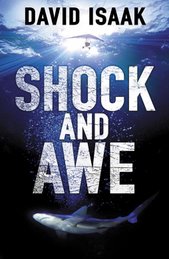The redoubtable Roger Morris (and his evil twin RN Morris), author of Taking Comfort and A Gentle Axe, left a description of his working method in the Comments trail. I have to say that some of Roger's tactics must be unique. In particular, Roger is the only writer I've heard of who includes tracing paper in his working methodology. (I hoping he'll show me how he does this, since I find it hard to picture. [Roger has elaborated in the Comment trail below.] When he donates his papers to his alma mater, he needs to include the tracing paper; this will greatly baffle future scholars, and possibly form the basis of some 22nd-century Da Vinci Code-type novel):
I'm trying to think of my writing method. I used to dive in with only the vaguest idea of where I was going. But several unpublished novels later, I worked out that I needed to do a little bit more planning. I like to do what I call 'cooking' where I just mull over things for a long time. If I'm writing one of my crime novels everything has to be really plotted out. I now use sheets of A3 tracing paper to write my story strands on. I can lay them over each other to see how the layers connect. I also have to work out a time line pretty tightly. But even Taking Comfort, which was not so much a genre crime novel, had a lot of work put into the story. I treated it a little like a screenplay - you know, structure is story (now who said that?). In fact, I wrote it as a screenplay at one point. Then I realised it had to be a novel.
Another thing I do when I'm starting out is get a lot of different coloured index cards and different coloured pens. I write character details on the cards - colour coded depended on which plotline they fit in with mainly. Of course, the characters overlap, but they usually belong to one strand or another. Then I completely ignore the cards and write the book. (Well, sometimes I check back, just to make sure I keep things consistent.)
In my crime books (2 written so far, so that hardly qualifies me to speak with any great authority - but I do what I do) I also find it quite useful to write a developed chapter by chapter synopsis, before writing the book itself. In this synopsis, the final denouement will be written quite fully, with a fair amount of the dialogue in place. I have found both times that I have used a lot of this dialogue when I actually get to the writing itself. So I suppose what I do is write the ending first! Weird, hey?
Subscribe to:
Post Comments (Atom)



2 comments:
Perhaps I should explain about the tracing paper. I always start off on A3 paper - or a combination of A3 and index cards. Well, actually, A3, index cards and notebooks. Make that A3, index cards, notebooks and...
Well, anyhow, the A3 size has always been important to me in the planning stage, somehow. It allows me to jot down ideas, themes, characters, fragments and join them up - then scribble associated ideas in the gaps between the lines, or up the sides, or in little boxes I draw in the spaces formed by short lines, etc. I always try to use a really fine pen on a big sheet of paper, making my handwriting quite small. But the A3 size seems to be important (this is all sounding a bit OCD, is it not?). So one day, in the early stages of something or other, I went to the local office shop and the only A3 pad they had was tracing paper. All I knew was I had to have A3. I began to panic at the prospect that I couldn't get my A3. So it wasn't the A3 I was used to, but it was still A3. I took a risk and went with it.
When I got home I discovered that it was mighty fine gear. Mighty fine - opened up vistas of plotting I had never experienced before. Once you try A3 tracing, there's no going back.
Man, I have GOT to see this in the real world!
Thanks for clarifying (though it sounds a little like the garage scene from "A Beautiful Mind".)
What works, works, right?
Post a Comment